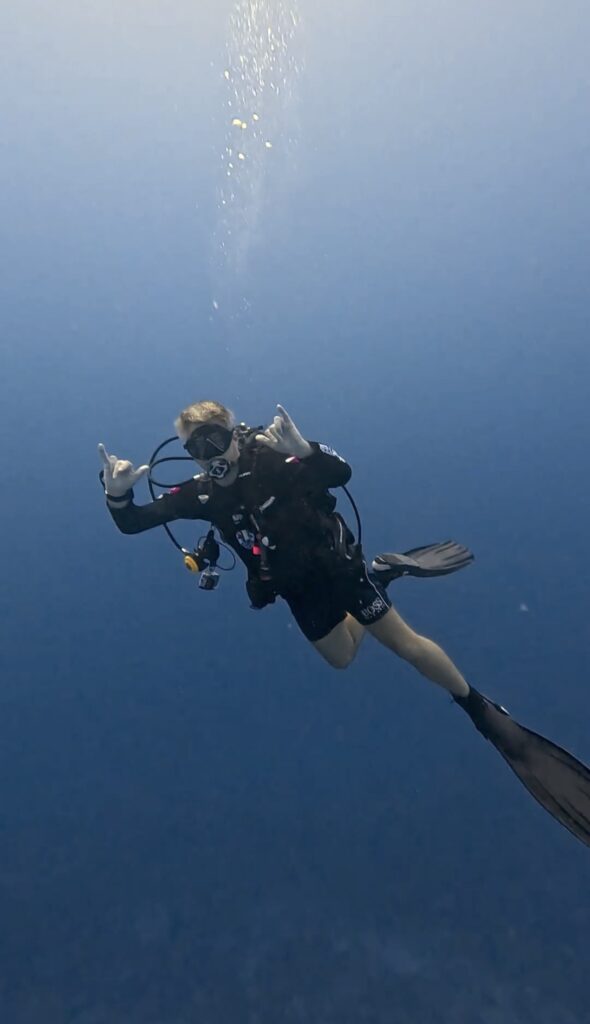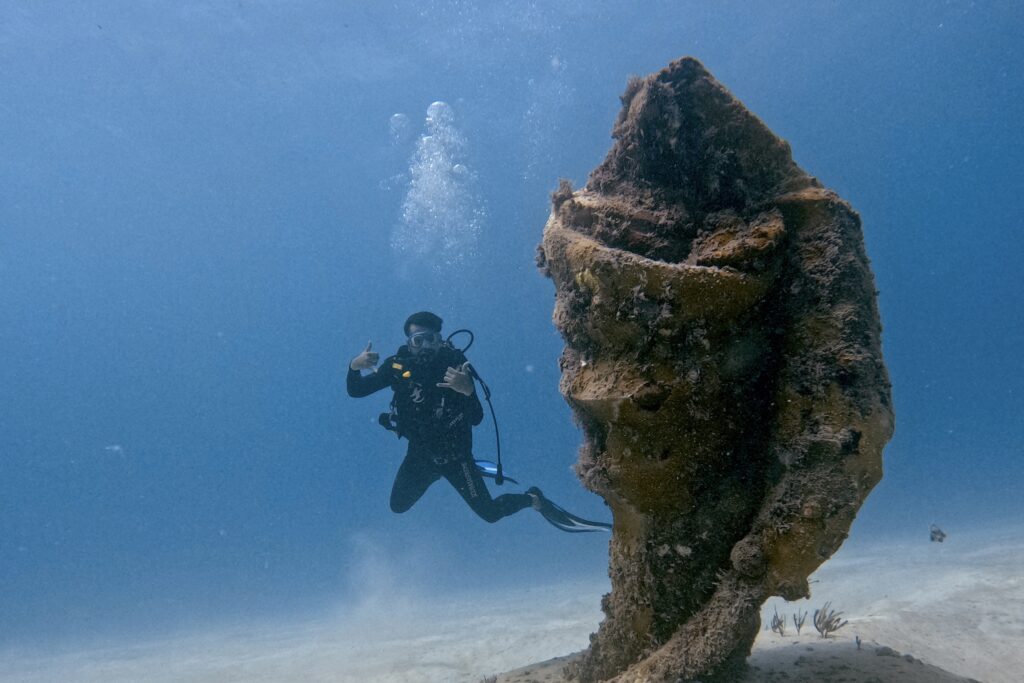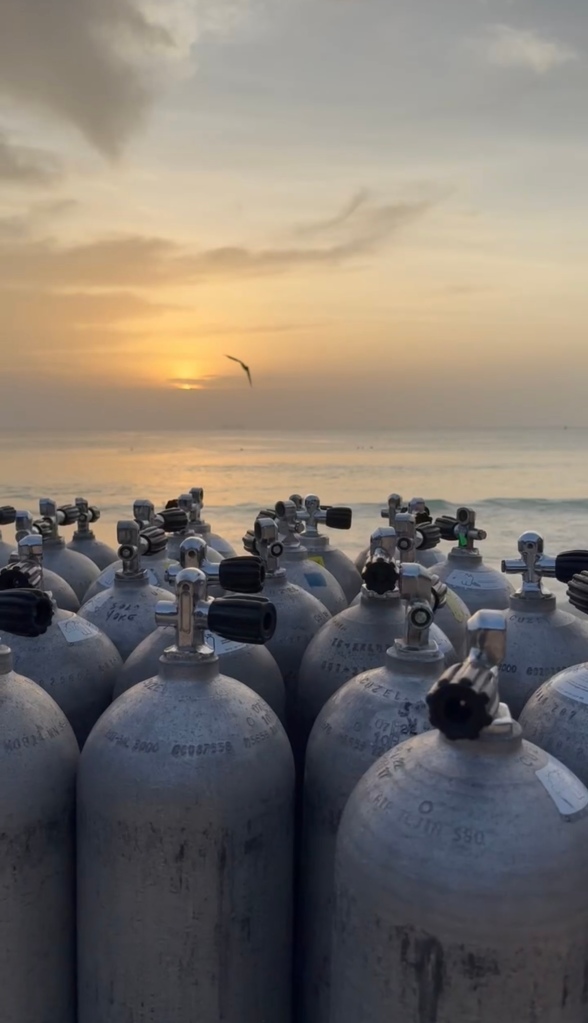Scuba diving is not just about exploring the vibrant underwater world; it’s also a fascinating interplay of physics, chemistry, and human physiology. To dive safely and effectively, it’s crucial to understand the core scientific principles that affect every descent and ascent. In this blog, we’ll delve into the science of diving, focusing on three fundamental concepts: pressure, buoyancy, and gases. Understanding these elements will not only enhance your safety but also deepen your appreciation for the underwater environment.
Pressure: The Invisible Force Underwater
When you dive, you’re subjected to changes in pressure that affect both your body and your equipment. Let’s break down how pressure works underwater:
Understanding Pressure
Pressure is the force exerted per unit area. At sea level, we experience atmospheric pressure, which is approximately 14.7 pounds per square inch (psi) or 1 atmosphere (atm). As you descend underwater, pressure increases due to the weight of the water above you. For every 33 feet (10 meters) of seawater, the pressure increases by 1 atmosphere.
For example:
- At the surface (0 feet), the pressure is 1 atm.
- At 33 feet (10 meters), the pressure is 2 atm (1 atm of air + 1 atm of water).
- At 66 feet (20 meters), the pressure is 3 atm, and so on.
Effects of Pressure on the Body
As pressure increases, it affects the gases in your body and equipment. Boyle’s Law states that the volume of a gas is inversely proportional to the pressure exerted on it. This means that as pressure increases with depth, the volume of air in your lungs, mask, and BCD (buoyancy control device) decreases. This is why equalizing your ears and mask is crucial during descent—to prevent discomfort and possible injury from pressure differences.
Another key factor is the increased solubility of gases in body tissues under higher pressure. This can lead to nitrogen narcosis, a condition caused by breathing nitrogen at depth, which impairs cognitive function and coordination.
Buoyancy: The Art of Neutral Balance
Buoyancy is the force that allows divers to ascend, descend, or remain at a constant depth. Understanding how buoyancy works is essential for maintaining control underwater.
The Principle of Buoyancy
Buoyancy is governed by Archimedes’ Principle, which states that an object submerged in a fluid is buoyed up by a force equal to the weight of the fluid it displaces. There are three states of buoyancy:
- Positive Buoyancy: The diver or object is lighter than the water displaced and will float towards the surface.
- Negative Buoyancy: The diver or object is heavier than the water displaced and will sink.
- Neutral Buoyancy: The diver or object’s weight is equal to the weight of the water displaced, allowing it to remain suspended in the water column.
Achieving Neutral Buoyancy
Achieving neutral buoyancy is the goal for divers, as it allows for effortless movement and conservation of energy. This is typically managed using a buoyancy control device (BCD) that can be inflated or deflated to adjust a diver’s buoyancy. Weight belts or integrated weights are also used to help offset the positive buoyancy of the human body and wetsuit.
Breathing control plays a significant role in maintaining buoyancy. When you inhale, the increase in lung volume adds to your positive buoyancy, causing a slight rise. Exhaling decreases lung volume and makes you slightly negatively buoyant, causing a slight descent. Mastering buoyancy control is a skill that comes with practice and is crucial for reducing air consumption and avoiding contact with delicate marine life or the seafloor.
Gases and Diving: The Role of Nitrogen, Oxygen, and Other Gases
The gases you breathe underwater behave differently than they do on land due to the increased pressure, which can have significant implications for diver safety.
Nitrogen: The Silent Partner
Underwater, nitrogen, which makes up about 78% of the air we breathe, can have several effects:
- Nitrogen Narcosis: As mentioned earlier, breathing nitrogen under high pressure (at depths generally greater than 100 feet or 30 meters) can cause a narcotic effect, often described as feeling euphoric or drunk. This can impair judgment, coordination, and reaction time, increasing the risk of accidents. The effects are reversible upon ascent to shallower depths.
- Decompression Sickness (DCS): Also known as “the bends,” DCS occurs when nitrogen dissolved in body tissues forms bubbles as the diver ascends too quickly. These bubbles can cause joint pain, dizziness, paralysis, and even death if not treated promptly. To prevent DCS, divers must ascend slowly and perform safety stops, allowing excess nitrogen to be safely off-gassed.
Oxygen: The Lifeline and Potential Hazard
While oxygen is essential for life, it can be toxic under high pressures—a condition known as oxygen toxicity. At depths greater than 130 feet (40 meters), the partial pressure of oxygen can reach levels that can cause central nervous system toxicity, leading to convulsions and loss of consciousness. To mitigate this risk, technical divers often use gas mixtures with reduced oxygen content, such as trimix (a blend of oxygen, nitrogen, and helium).
Helium: The Friend of Deep Divers
Helium is an inert gas often used in deep diving to reduce the risks associated with nitrogen narcosis and oxygen toxicity. Helium does not have narcotic effects and allows divers to reach greater depths safely. However, because it conducts heat more effectively than other gases, divers using helium must take additional precautions against hypothermia.
Understanding the science of diving is essential for every diver, from beginners to seasoned professionals. The interplay of pressure, buoyancy, and gases determines every aspect of a dive, from the initial descent to the final ascent. By mastering these concepts, divers can enjoy a safer, more controlled, and ultimately more enjoyable experience underwater.
Remember, knowledge is power—and in the underwater world, it’s also safety. So next time you prepare for a dive, take a moment to reflect on the science that makes this incredible adventure possible. Dive smart, dive safe, and enjoy the wonders of the deep blue!



